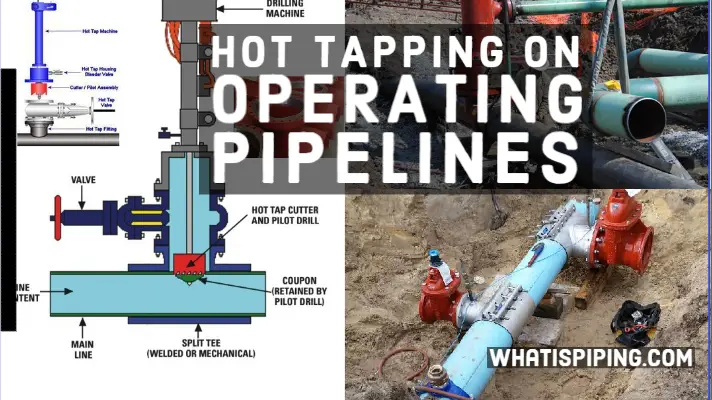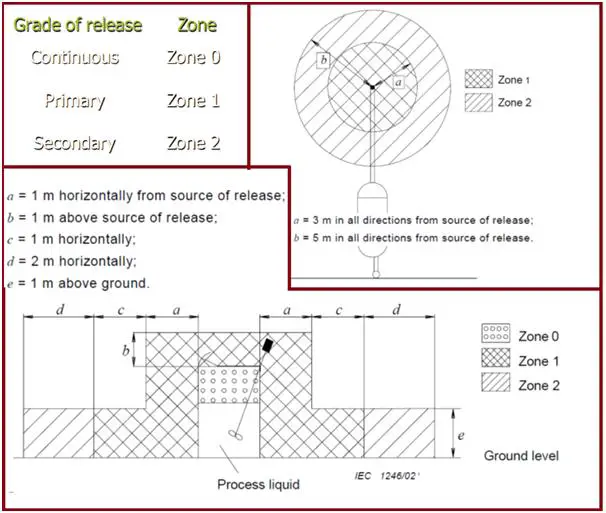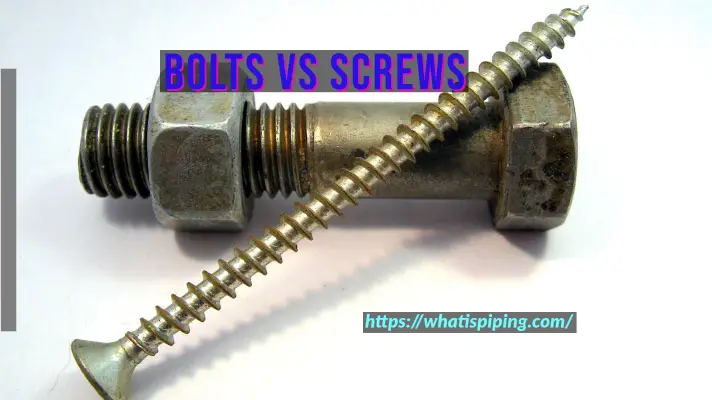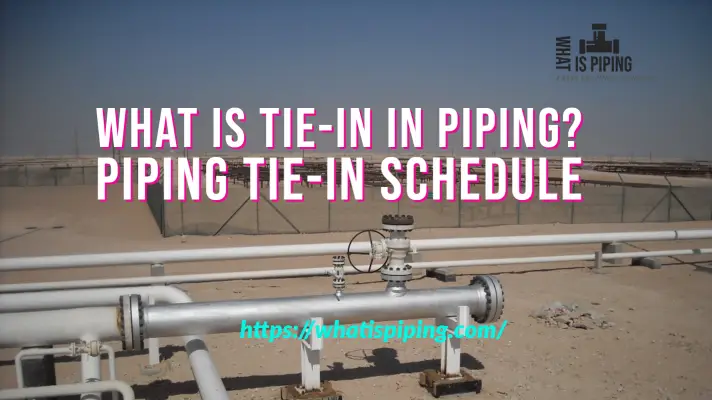Hot bolting is defined as the process of removing and replacing or re-tightening bolts in the flange connection assembly when a pipe or equipment is in operation and full of liquid or gas. So, from the definition itself, you can understand that hot bolting is regarded as a high-risk activity.
In normal engineering practice, working on live pipes is prohibited (except hot tapping). Any repair or replacement is done in shut-down condition after detaching the part from the live stream. Working on a live system is always hazardous and therefore, hot bolting must be performed after a thorough risk assessment and job safety analysis. Utmost caution should be exercised and any benefit that is received from hot bolting activity must be weighed against the risks associated with it.
Hot bolting is basically a part of preventive maintenance activity. A specified sequence is followed to remove and replace nuts/studs during the hot bolting operation.
Reason for using Hot Bolting
There are various reasons for performing hot bolting in piping and equipment flanges. Some of these are:
- Replacing Damaged or Corroded Bolts: Sometimes during an inspection, if corroded or damaged bolts are found and there is no planning for an immediate shutdown, hot bolting is suggested to replace the damaged ones.
- Upgrading Material Specification or Bolt Grades.
- Minimizing the time required during plant shutdown.
Advantages of Hot Bolting
There are several benefits of hot bolting like
- Avoidance of unplanned shutdown.
- Increased safety by replacing the damaged bolt.
- Improved joint integrity as the weak link is removed.
- Shutdown time reduction.
- Increased efficiency.
- Reduction of the number of ‘containment breaks’.
- No downtime means production is not hampered.
Considerations prior to Hot Bolting Procedure
As working on live lines are hazardous, a number of factors must be considered prior to hot bolting. Some of these factors are:
- The work must follow all the guidelines as mentioned in the operator’s working procedures.
- The operating pressures and temperatures of the system shall be checked and decided if suitable for hot bolting. Some companies follow the operating pressure to be less than 75% of the MAWP as allowed under ANSI B16.5 at the operating temperature as a guideline for hot bolting.
- There should be a minimum of eight bolts in the flange joints that are considered for hot bolting operation.
- Prior to work commencement, the site supervisor shall review the maintenance history of the joint. Any important relevant history must be checked.
- The joint under the purview must be visually checked. If the joint show significant corrosion or necking signs, hot bolting shall not be performed.
- Hot bolting shall be performed only for those flanges for which records exist.
- The consequences of joint leakage during hot bolting shall be carefully studied and considered. All necessary precautions due to possible toxicity, flammability, and temperature of escaping fluids shall be kept in place during an emergency situation.
- Pipework near the zone where hot bolting will be performed must be reviewed thoroughly. In case, the pipework shows any vibration around the concerned flange joint, then hot bolting should not be considered.
- The design specifications of the flanged joint, bolting, and gasket specifications need to be reviewed.
Hot Bolting Procedure
Hot bolting, in general, is performed following a series of steps. These are:
- Permits and necessary approvals for hot bolting need to be taken from safety professionals.
- All the necessary personnel, materials, and equipment are arranged at the worksite.
- Inspect each bolt for tightness. Any abnormal conditions shall be intimated to the responsible authority.
- Follow the operator’s correct sequence and carry out hot bolting on one bolt at a time. The usual sequence is:
- Remove–>Examine–>Clean–>Lubricate each bolt as required–>check if the nuts can be reused–>Tighten the bolt
- Any damaged/questionable bolts or nuts shall be disposed of and replaced with new items as per the correct piping specification. Clean all exposed flange surfaces.
- Once all bolts are replaced, inspect to ensure proper tightness.
Best Practices for Hot Bolting
Even though hot bolting is hazardous, it is one of the cheapest options. So, the hot bolting is usually performed under controlled conditions. The following practices will reduce the chances of potential problems:
- The technicians must be thoroughly trained in all the processes and possible consequences.
- A full examination and evaluation of the piping network where hot bolting is required to be performed.
- Visual and non-visual tests by multiple people to ensure no error goes unnoticed.
- Inspection, service history, and analysis are based on logical and practical possibilities.
- A ready escape plan in case of a fault.
- Properly developed guidelines that have already been followed in other organizations or locations without fault.
So, using the above best practices during hot bolting, a majority of the problems can easily be avoided. So, even though there are safety concerns during hot bolting, they must be minimized using safe, established procedures.
Standards for Hot Bolting
The ASME standard PCC-1 provides certain guidelines for hot bolting work.









Mr. Anup Kumar Dey,
Do you have any reviews/literature related to pipe sleeves?
Regards,
Chandra Sitorus
Hello Mr Anup,
Do you have any documents for hot bolting for hot oil line operates at 320Deg ?
Tightening torque for flanged joints ?
We will torque the flange joints in cold condition.
Do we need to torque it again in hot condition ?
Dear Anup,
Thanks for the detailed study matetrial
please check below sendance for your review.
Any damaged/questionable bolts or nuts shall be disposed of and replaced with new items as per the correct piping specification. “Clean all exposed flange surfaces”
Is it possible cleaning of flanges.
well done, Anup.